As we discussed in our Part 3 blog “How to Create More Efficient Marketing Campaigns”, one of the best philosophies for small business owners is to work smarter, not harder. The good news is, that’s even easier today with so many great marketing automation and collaboration tools on the market. No matter how large or small your company is, there’s surely a solution that can meet your business needs and budget.
Since every company is different, what might be the ideal set of collaboration features for one business might completely miss the mark for another. So, in addition to highlighting some of the best collaboration tools, in this post we’ll also cover a few key capabilities and specific tools relevant to small businesses.
First: What is a collaboration tool?
Collaboration software simplifies remote teamwork by making it easier for people to work together on tasks even (and especially) when they aren’t in the same physical proximity. In the era of widespread remote work, collaboration apps are more important than ever, because employees today are rarely working in the same office, let alone the same time zone. As a result, collaboration software offers a highly efficient way to “pass the baton” on projects by facilitating communication, file sharing, and task management among team members.
Key benefits
Align your team on tasks and goals.
Collaboration tools can function as a holistic, digital workplace by making it easier for co-workers to message each other, schedule meetings, discuss projects, and assign tasks. Since many collaboration suites easily integrate with popular calendar and workflow software, team members can easily view and customise their daily, weekly, and monthly responsibilities either from a desktop or mobile app.
Store all of your digital assets in one place for easy access.
This is especially critical to ensure that team projects can be accessed, shared, and updated from any device. Cloud-based storage not only keeps files secure, it provides a centralised and accessible repository of files and other projects, such as business presentations or quotes for a potential customer. Remote team members can collaborate on documents in real time, which helps them work more efficiently, eliminates the need to email files back and forth, and reduces problematic and confusing version control issues. Plus, if a team member goes on vacation or leaves the company, you don’t have to worry about losing projects that may reside on that employee’s hard drive or another computer.
Increase flexibility without sacrificing productivity.
Workers are facing unprecedented challenges in the COVID era. Remote work is not ideal for everyone, especially those who may have to juggle home responsibilities such as child care. For these and other reasons, your team members may have to work non-traditional business hours. Collaboration tools can make it much easier to meet deadlines, especially when team members have to work at 2:00 a.m. instead of 2:00 p.m.
Affordable collaborative tools that deliver key SMB benefits
Google Apps for Business offers an all-in-one team collaboration platform that includes features such as Google Hangout for video calls, Google Docs, Sheets, and Slides for shared projects, Calendar for scheduling, Gmail, and many other options. Not only is Google Workspace’s interface highly intuitive and easy to use, the platform also offers pricing options that put it well within range of most small business budgets.
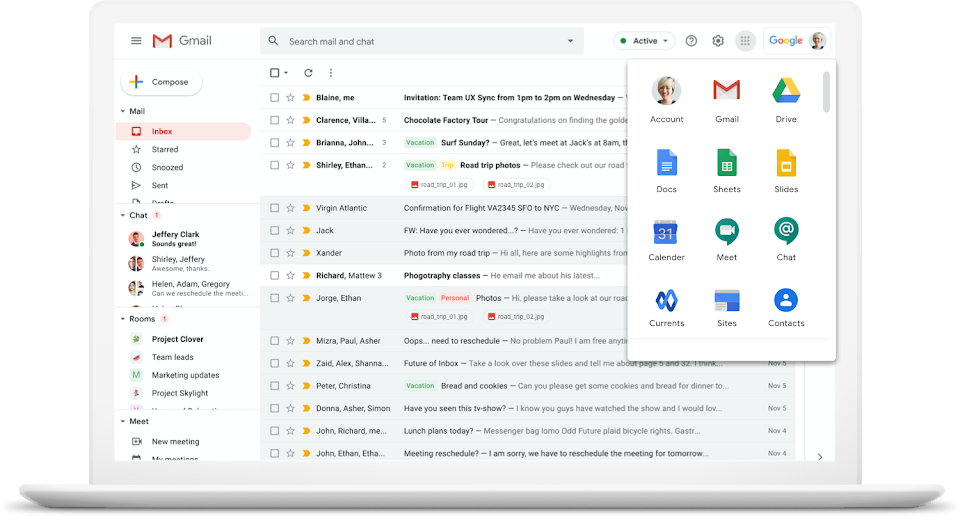
Microsoft Office 365, which includes Outlook, is another industry standard that many businesses may already be using. It offers all of the features teams need to collaborate directly on the same set of documents, whether it’s tracking financials in an Excel spreadsheet, creating a presentation in PowerPoint, or writing business letters in Word. Plus, Microsoft Teams is now bundled with some Office 365 packages to enable video calling. And, because Office 365 is a cloud-hosted platform, it can streamline tasks across Mac, Android, and iOS mobile devices, not just Windows desktops.
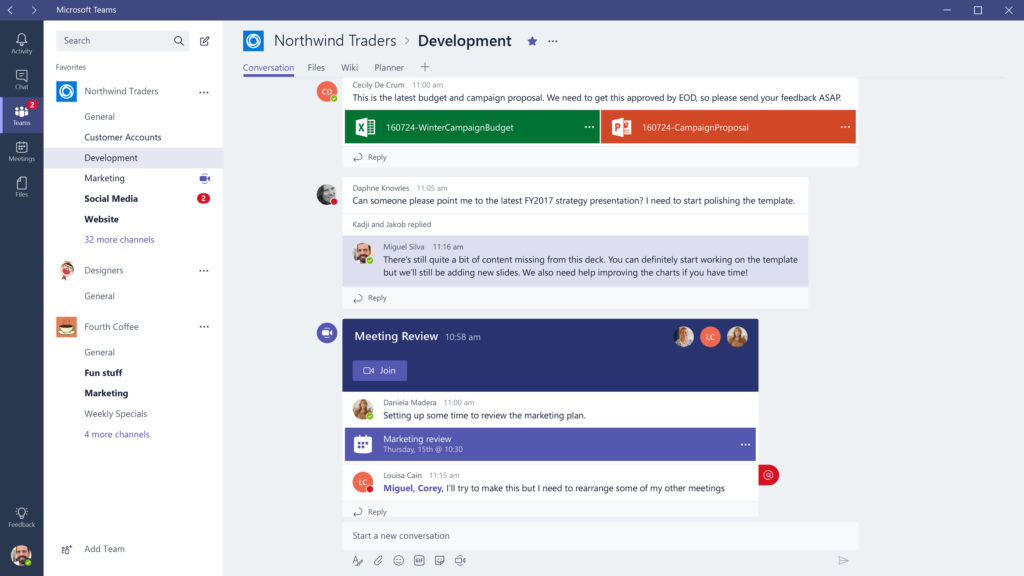
Slack has become a highly popular team communication tool around the world. It provides an excellent instant messaging and videoconferencing platform that works across mobile and desktop devices. Unlike G Suite and Office 365, it doesn’t offer cloud storage services, but users can easily share files with teammates directly within Slack. It also works seamlessly with cloud services like Google Drive, Dropbox, and Box.
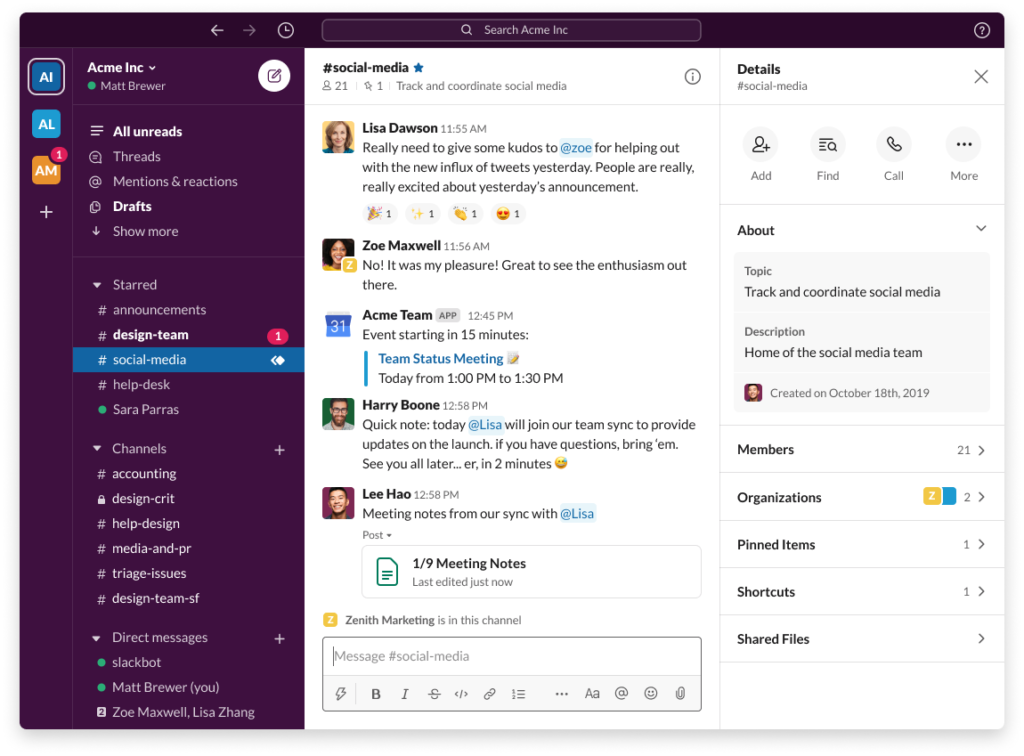
Act! CRM is an all-in-one customer relationship management and e-marketing tool that allows teams to capture and manage contacts, activities, and calendars from one place, and includes built-in, intuitive marketing features like plug-n-play email templates and campaigns. Act! CRM organises prospect and customer engagements, simplifies and automates a team’s day-to-day tasks, and allows users to create targeted promotions and personalised follow-up communications. Act! CRM’s mobile and scalable design allows it to be accessed on-the-go and expand with users as their businesses grow. Want to take Act! for a spin? You can try it here for free for 14 days.
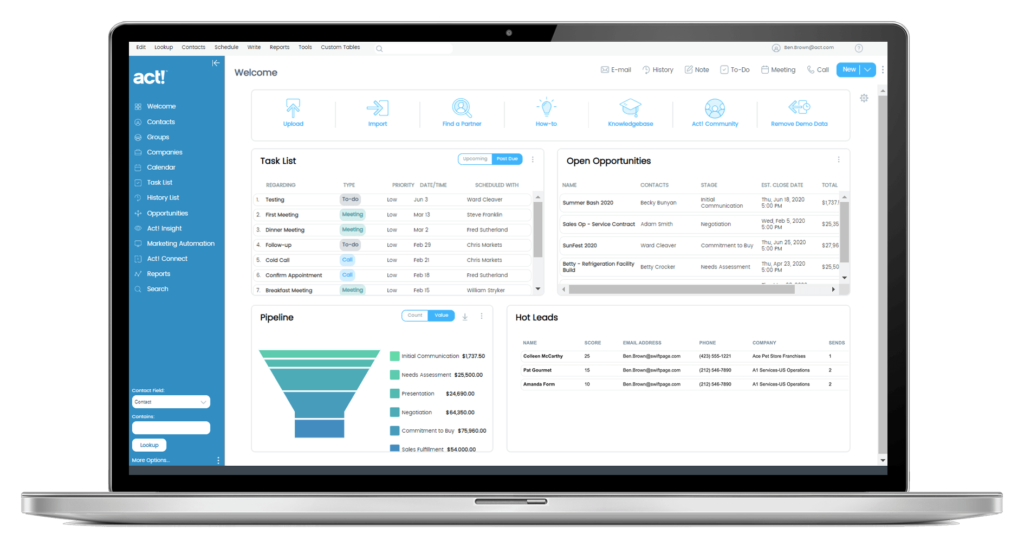
Monday.com is a project management tool that helps small businesses schedule, track, and collaborate on projects in a very user-friendly way. Its drag-and-drop functionality is ideal for companies that need to support project management and general workflow management among remote employees. Like Slack, it integrates with Google Drive, Dropbox, and other cloud platforms, making it easier to share everything directly within the platform itself.
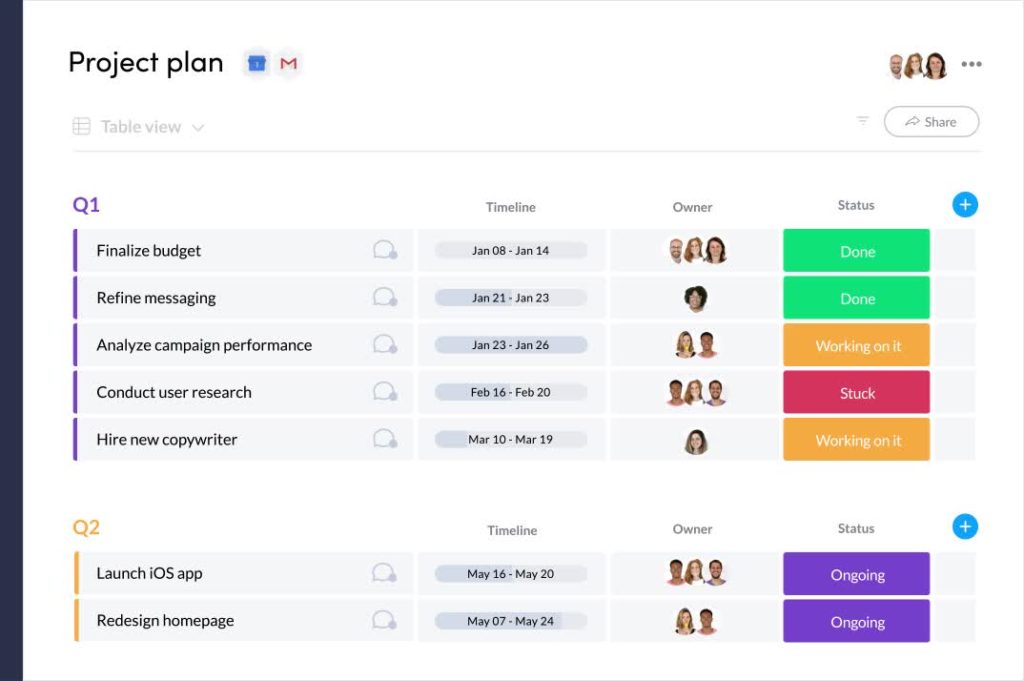
Flock is another type of project management software that enables team members to easily exchange messages, share files, host video conferences, manage projects, and set up calendar events all from a single app. It integrates with Google Drive as well as other collaboration tools like Asana and MailChimp. This makes it much easier for teams to keep track of projects and timelines without toggling back and forth between multiple apps.
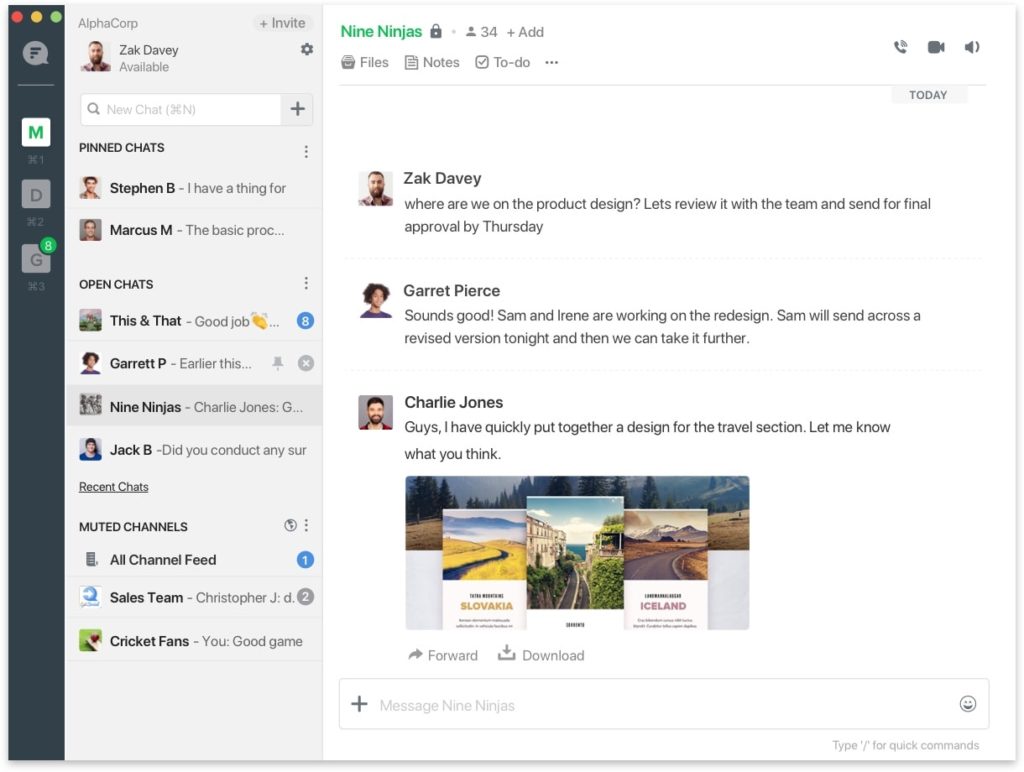
Sync.com is ideal for smaller businesses and entrepreneurs who only need a simple and secure cloud storage platform. It offers several useful sharing options, including password-protected sharing links, expiration dates, download limits, link activity tracking, and more. Sync.com does offer a free version for SMBs that only need document storage and simple sharing options. More advanced sharing options can be accessed through a paid subscription plan.
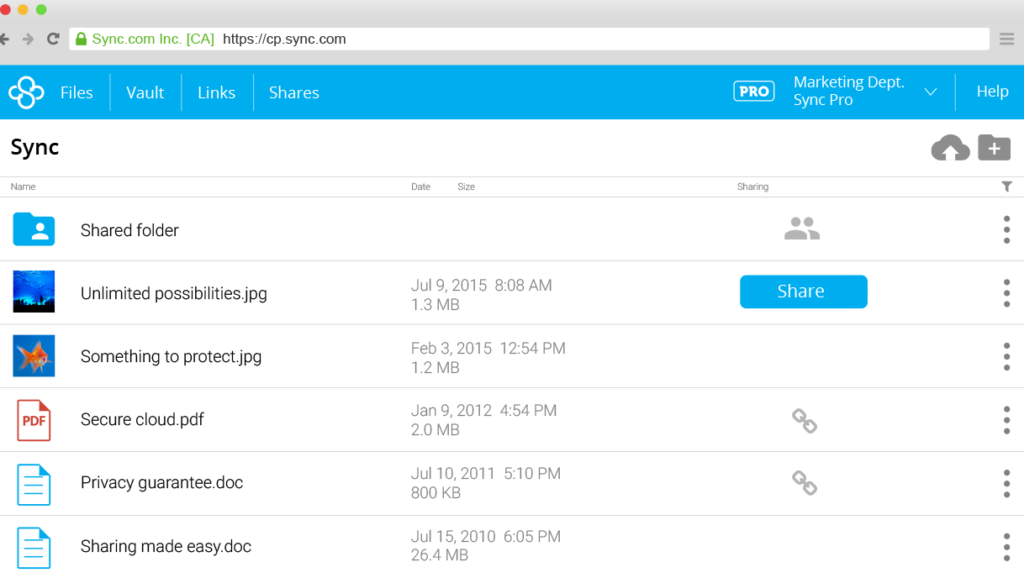
This list is just a small sample of all the great online collaboration tools available. The good news is, there’s likely a tool that meets your specific business needs and price point, even if it didn’t make this list.





